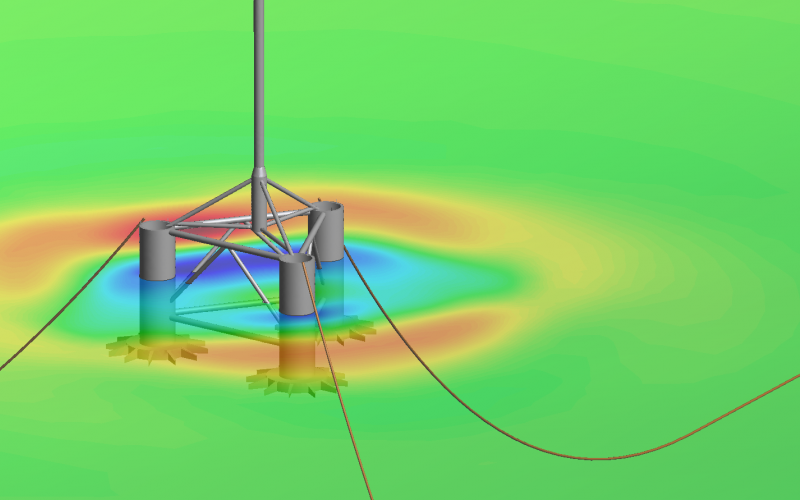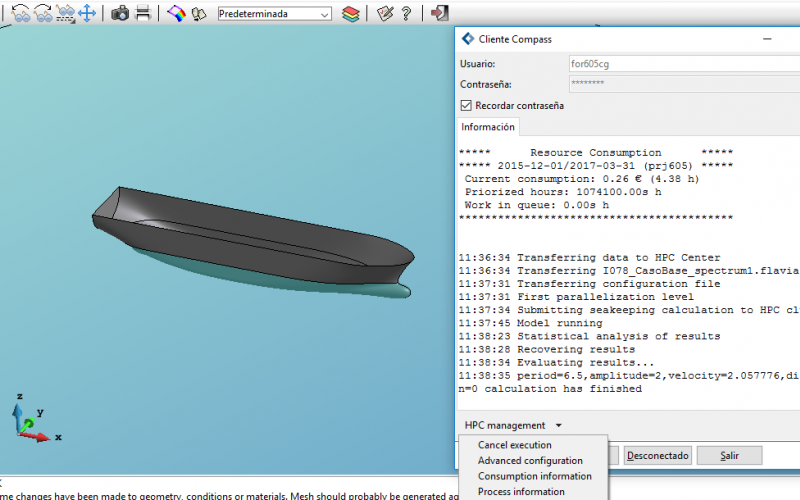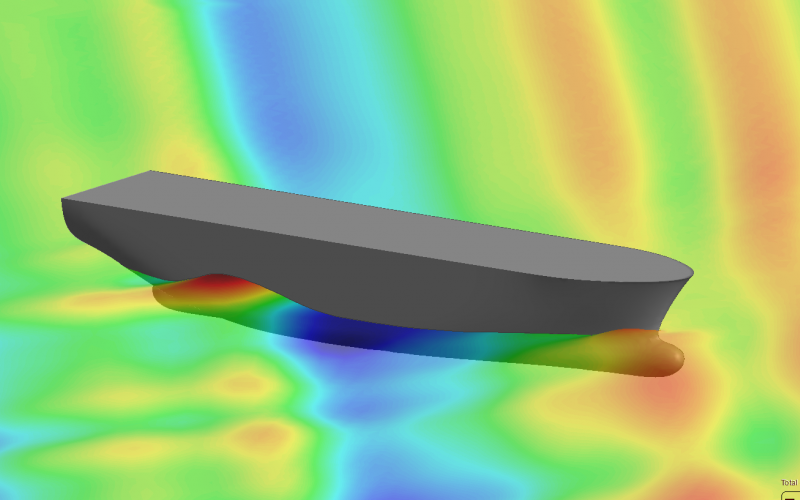HPC-Cloud-based seakeeping design



The Challenge
The challenge addressed in this experiment was to demonstrate the use of advanced simulation in seakeeping design. Such simulations require large amounts of computing power to realise viable calculation times. This requires the use of computing resources from an HPC provider. The objective of this experiment was to adapt seakeeping software to run on remote HPC resources, to demonstrate the benefits of advanced simulation using Cloud-based HPC, to study the resultant performance of the simulations and to demonstrate their potential economic impact. A further aim was to develop a service for seakeeping studies available within the Fortissimo Marketplace. Realising such aims would give WAVEC and VICUSDT a powerful design tool and a significant competitive advantage.
The Solution
The relevant software packages have been ported to the HPC-Cloud-based system and integrated into an overall simulation package. An effective interface between the end-user and the HPC resources has been implemented which integrates the various software components and the HPC system. This enables the simulations to be run from a familiar desktop system whilst using the full capabilities of the HPC system. The simulations running on the HPC system have been benchmarked using a model of an off-shore floating wind platform and a model of a stern trawler. These demonstrated a significant speed-up by a factor of 45 through the use of an HPC system. This makes previously infeasible simulations now feasible and paves the way for new services to be offered by the end-users WAVEC and VICUSDT.
The Benefits
The use of Cloud-based-HPC simulations enables cases to be analysed more quickly. It also allows previously infeasible cases to be analysed.
Over the next four years, from 2017 to 2020, WAVEC expects an increase in its total profit of ~€550K, based on a revenue of €1.8M, due to an increase in its consultancy activities. Over the same four-year period, VICUSDT expects an increase in its total profit of €480K, based on a revenue of €1.4M, due to an increase in its consultancy activities. Over the same four year period, COMPASSIS expects an increase in profit of €2M based on an increase in its licence sales of €4.5M.
A service for seakeeping assessments based on the results of this experiment is planned to be available in the Fortissimo Marketplace offering a pay-per-use model. Furthermore, CESGA proposes to offer a service in the Marketplace bases on the benchmarking of key applications and their performance and scalability.
Companies Involved
End-user: WAVEC and VICUSDT
ISV: COMPASSIS
Domain Expert: CIMNE
HPC: Provider: CESGA
